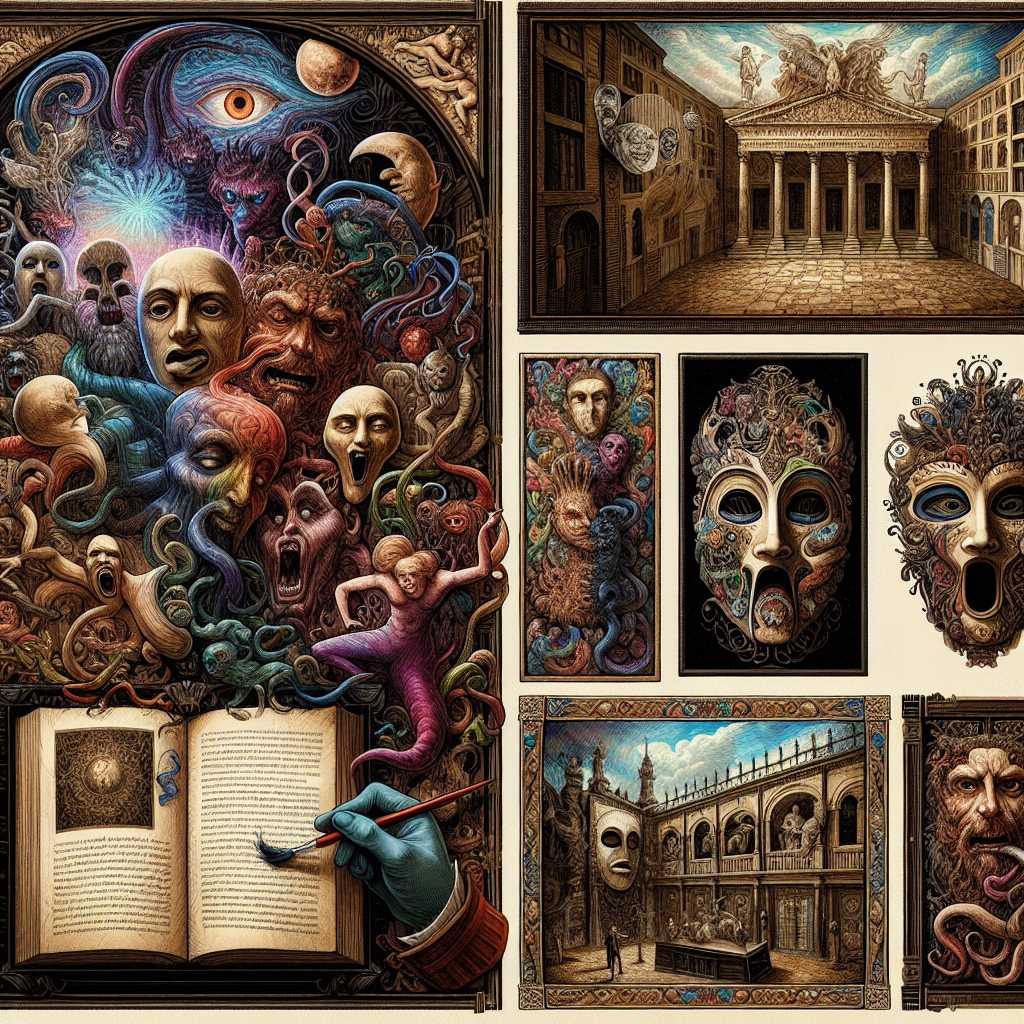The Essence and Evolution of Grotesquerie: A Cultural Exploration
Introduction to Grotesquerie
Grotesquerie is a concept that emerges from the depths of human creativity, aiming to evoke shock, awe, and sometimes humor through bizarre and fantastical imagery. With an etymology that stretches back to the 16th century, the word “grotesque” has been associated with the decorative art unearthed in Roman ruins, characterized by their intricately interwoven images of fantastical creatures and distorted figures.
Historical Roots of Grotesque Decor
The most ancient instances of grotesque ornamentation were discovered in the grottoes of Rome. These areas, once part of Roman Emperor Nero’s Domus Aurea palace, became subterranean after being buried beneath newer constructions and were accidentally unearthed during the Renaissance. The Italian word “grottesche,” which translates to “of the cave,” is where the term has its roots.
Renaissance artists, utterly mesmerized by these ancient patterns, began to incorporate this ‘reborn’ aesthetic into their works. It quickly became popular in home decoration, frescoes, and illustrations throughout Italy and eventually the rest of Europe.
The Grotesque in Literature and Performance Art
Grotesquerie transcends beyond visual arts; it holds a significant place in literature and performing arts. Gothic literature often brings grotesque elements to the forefront by creating eerie atmospheres and physically or psychologically malformed characters that both repel and fascinate readers.
During the late-Victorian period up till the modernist movement, writers like Edgar Allan Poe, Mary Shelley, Herman Melville, and Franz Kafka among many cultivated boldly grotesque narratives, often blurring the lines between reality and fantasy. Within these works rests an inherent criticism of society or human nature itself – reflecting the order through chaos-motif inherent in grotesque art.
Theatre has always had a streak of grotesquerie too, from its earliest days to contemporary works. The classical Commedia dell’arte employed exaggerated masks and costumes to reflect human follies comically or tragically. In modern times, plays and musicals can be replete with fancifully phantasmagoric elements aiming to create a visceral audience experience.
Modern Interpretations: From Surrealism to Pop Culture
In the visual arts, the 20th century brought forward movements like surrealism led by artists such as Salvador Dalí whose works married dreamlike mysticism with bizarre motifs. The surrealists drew heavily from Freudian interpretations of dreams and deeply entrenched psychoanalytic concepts within their art—serving as both shock art and profound philosophical expressions.
Even in today’s pop culture, the legacy of grotesquerie remains strong. Horror movies employ grotesque special effects makeup to thrill viewers; high-fashion designs sometimes wander into the realm of the grotesque with extreme forms and eccentric presentations on runways.

